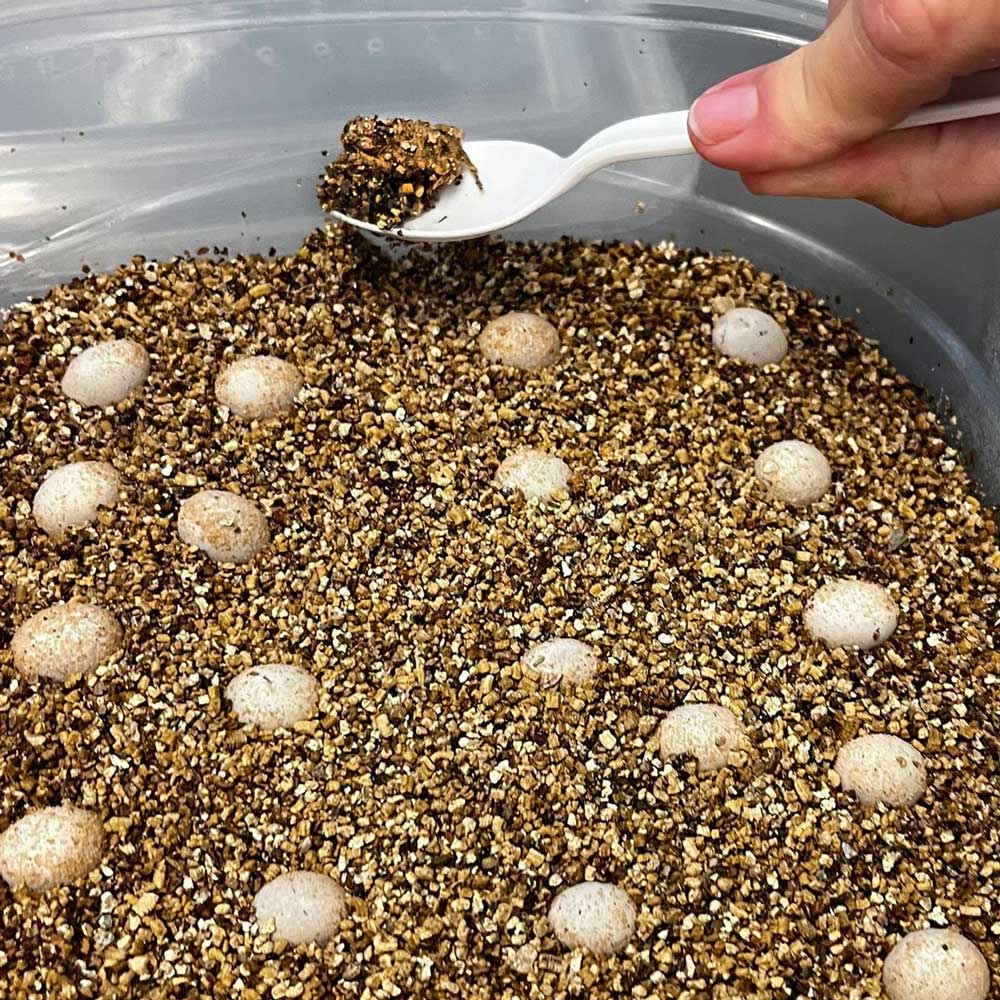These lizards are an important part of the ecosystem and really, a cherished part of Texas lore.
The Caldwell Zoo, which has been captive breeding, hatching and releasing Texas horned lizards (Phrynosoma cornutum) for five years, has announced a new hatch of the little miniature dinosaurs.
“We are very dedicated to the cause. These lizards are an important part of the ecosystem and really, a cherished part of Texas lore,” Katelyn Lenhart, supervisor of reptiles at the Caldwell Zoo said in a press release announcing the hatching. “People used to grow up seeing these lizards all the time. Now, they are a rare sight. The species need help to survive. So, we’re doing all we can to make sure they are here for generations to come.”

A clutch of Texas horned lizard eggs and a hatchling. Photo courtesy Caldwell Zoo. Used with permission.
The zoo has built habitats designed specifically for mating pairs of the horned lizards and once the eggs are laid, they are moved to an incubator to increase their chances of survival. As they hatch, the lizards are moved to a climate controlled environment where they are fed termite larva. They are then monitored for several weeks and the released onto protected land near Mason Mountain, TX, the zoo said. Monitoring of the lizards occurs and they are apparently doing well.
Where Did All The Horny Toads Go?
Several Released Texas Horned Lizards Survive Into Brumation
“It’s working and that’s what is important,” says Yvonne Stainback, curator of birds and reptiles at Caldwell Zoo said. “This year, we have over seventy hatchlings to reintroduce into the wild. That’s our biggest release yet. Plus, we have found mature lizards in the release area that were hatched at our center. That shows that these lizards are truly surviving in the wild. I’m proud of my team and their dedication to this project. We are making a difference. We are helping to save another species from extinction. And we’ll keep doing it as long as needed.”
Texas Horned Lizard Information
Horned lizards (Phrynosoma), often called “horny toads” or “horned frogs” are quite possibly the most gregarious genus of lizard species in North America. Of the 15 known horned lizard species in the United States, the Texas horned lizard is the most widely distributed. Once abundant in much of the Southwest, the Texas horned lizard has disappeared from much of its range in Texas and Oklahoma. It is listed as Threatened by the state. This is due to a variety of factors, including loss of habitat, planting of non-native grasses, conversion of land to pastureland and agricultural use, and the introduction of the invasive fire ant, which preys upon the native ants that horned lizards require to survive. These little dinosaurs do not make good pets because they require a steady diet of harvester ants.



